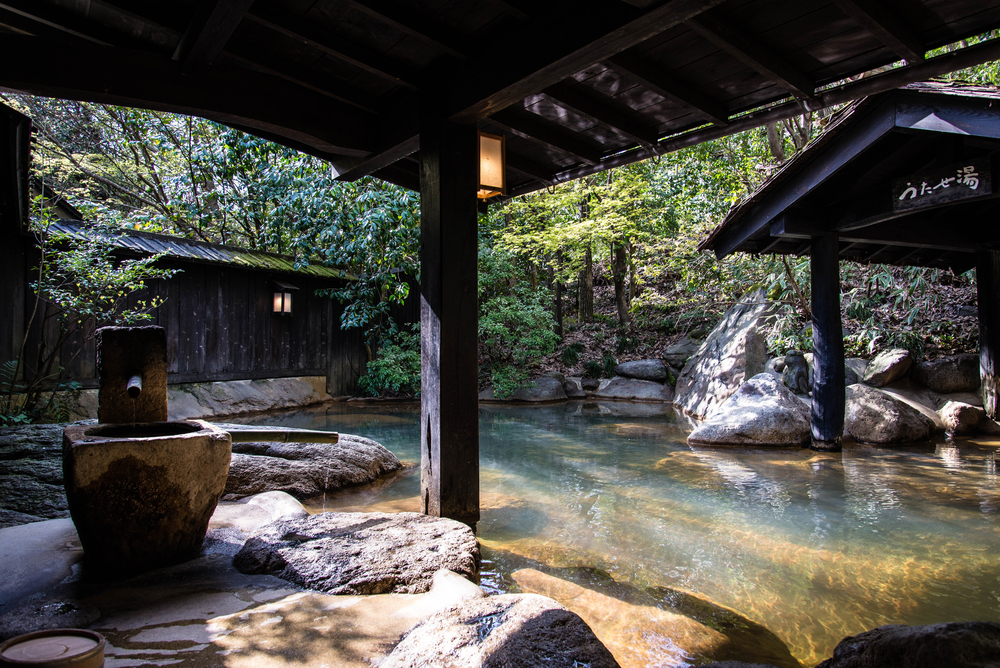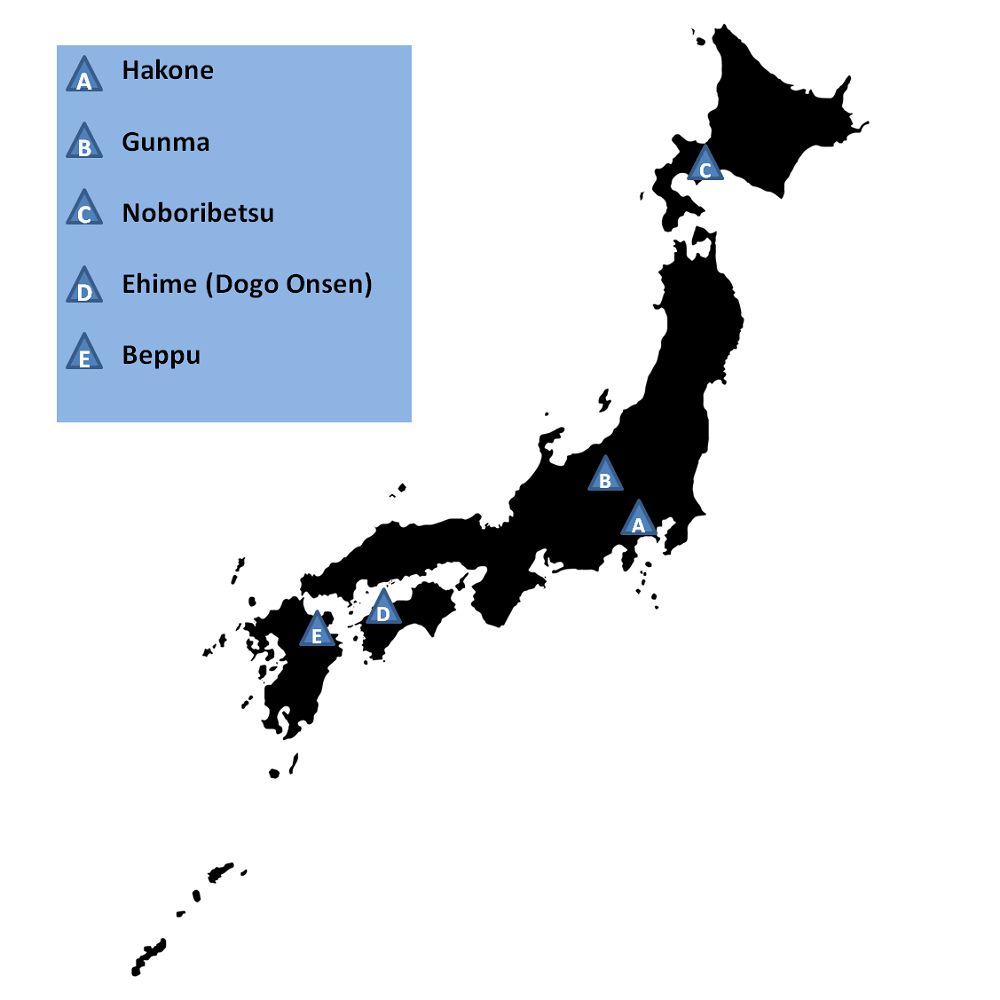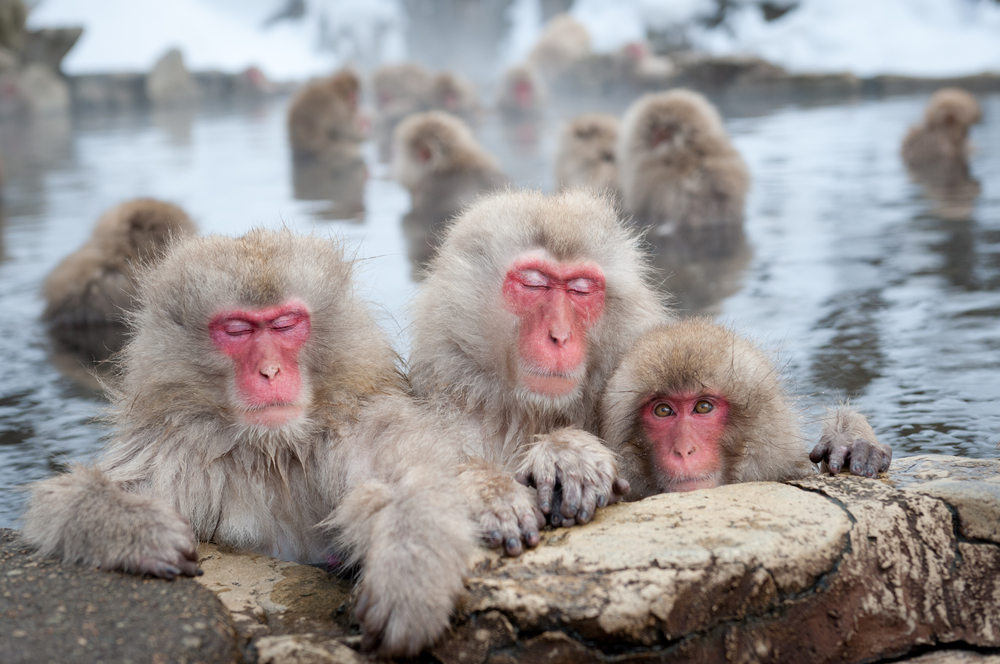Onsens Part 1: About onsens and sentōs
Updated October 31, 2024
Onsens are a big part of Japanese culture. Because Japan has many volcanoes, the result is a culture revolving around the natural hot spring waters, and a large onsen culture that also includes baths that don't utilize the hot spring waters. Almost everywhere you go, you're sure to find an "onsen-ya" or "ofuro-ya" where you can sit and enjoy a relaxing bath. They're the perfect way to relax after a long day of sightseeing or walking around, and a great way to experience something significant in the culture. Throughout the years, onsens have increased in popularity with tourists, as more people became comfortable with the idea of a public bathing facility in modern times. It might be surprising to know, however, that there are certain etiquettes and practices that are expected within these onsen facilities. Due to the rise in popularity, we thought it might be a good idea to let you know some of the traditional customs associated with onsens. This post will be about the general background of onsen and sentōs in Japan, and the next post will continue with Part 2 which will be more to do with the etiquette and appropriate social behaviors expected at these onsen and sentō facilities.

Background
Before getting into rules, social behaviors, and etiquettes associated with onsen culture, we thought we'd give you a bit of background information on what onsens are. There are many places with onsens, and different styles of onsens in Japan. Essentially what onsens and sentōs are, are bathing facilities, open to the public to use and/or reserve privately. Sometimes, they may come with the use of other facilities such as saunas, and private showers, but this is not always the case.
Some of the traditional public bathing facilities thought of as general onsens are actually sentōs, but onsens have often been adopted as a common term for these sentōs. Although both of them are essentially bath spots, the baths in onsens are usually hotsprings, and the water comes from the natural hotspring source. The water is naturally heated due to the underground geothermal and volcanic activity, thus resulting in many outdoor hot springs/onsens as well. The outdoor onsens are called rotenburo. In order for an onsen to be qualified as an onsen, the onsens must contain at least 1 of 19 designated chemicals and be at least 25 degrees Celcius (77 degrees Farenheit) when the water reaches ground level.
Sentōs on the other hand are bathing facilities that use tap water instead of natural hotspring water to fill their baths. Usually these function more as a communal bath area, as traditionally not all houses had baths in Japan. Although not as common anymore due to Japanese houses having bathtubs built in now, sentōs sometimes have a few different types of bath waters, or they may only have one large bath.
The baths in onsens and sentōs also come in variety. What is meant by this is that there are often different types of bath waters available in one location. Usually, there are the traditional hot water baths, but visitors are often surprised to find that there are some unusual ones and ones beneficial for various ailments as well. Onsens can vary in color, in mineral content, in smell, and in function. Sometimes there are ones that are milky in color that claim to be good for the skin, ones that contain certain minerals good for muscle pain, and ones that contain sulfur and have a distinct smell believed to be good for arthritis. Although not every facility has the same type of baths or even variety, when you do come across an interesting one, they are usually marketed as being beneficial to your health or skin in some way and are exciting to try.
.jpg)
Onsen Destinations
Onsen resorts, especially, constantly attract many people including locals. In Japan, onsens and sentōs can be found all throughout. The most popular places to go and well-known onsen destinations are also scattered all around Japan. Here is a short list of places to check out for your next onsen vacation.

Hakone
Hakone is a town in the Kanagawa Prefecture and is a popular destination for the ryokans, traditional Japanese style inns, and onsen resorts. Considered a geopark by UNESCO, Hakone has access to many hot spring waters. There are many different types of onsens in the area and visitors don't necessarily have to be staying in the resort to have access to the bath facilities for some of the places. Hakone tends to be one of the most popular destinations for us(H.I.S) as well, and it's easy to see why!
Gunma
Gunma has many places that are known for their onsens as well. Located relatively close to Tokyo, it is a popular location for those who want to escape the busy-city life of Tokyo for a mini vacation. Gunma has over 200 onsens, so you're sure to find one that's right for you!
Noboribetsu
Noboribetsu in Hokkaido is one of the most popular onsen locations there. There are many hotels and ryokans offering various different types of baths. In Noboribetsu you also get the added benefit of beautiful, mountainous views, and there are even hiking trails that lead you to hot spring foot baths!
Dogo Onsen (Ehime)
This next location is a more specific location in Matsuyama, Ehime, but a great location to check out for those who enjoy onsens and history. Dogo Onsen is said to be one of the most famous and one of the most oldest onsens in Japan, it is said that even the Imperial Family have frequented this location. Irregardless, this is a notable onsen destination based upon the history of it.
Beppu
The town of Beppu has so many hot springs in the area, and is very famous for it. At first glance, the town seems to be covered in thick smoke, but upon further look, it is actually steam. Although it may seem alarming, the steam actually is coming from the many hot spring vents found all around Beppu. This onsen resort area has many varieties of onsens including a hot sand bath as well!
Onsens are a great way to unwind, and it almost seems like everywhere you look, there is an onsen or sentō where you can enjoy a relaxing soak. They can be enjoyed throughout all of the seasons, and even in the winter when it is snowing! There are however a few etiquette rules and norms that are expected to be followed when enjoying the use of the facilities. Since we love onsens so much, we decided to extend our onsen blog to another post. Read about the etiquette rules in our next post!
And hey, even monkeys love onsens!!

